Many multi-generational families spent time together this past weekend to celebrate Thanksgiving and the start of the Holiday Season together. A grandparent posed this question:
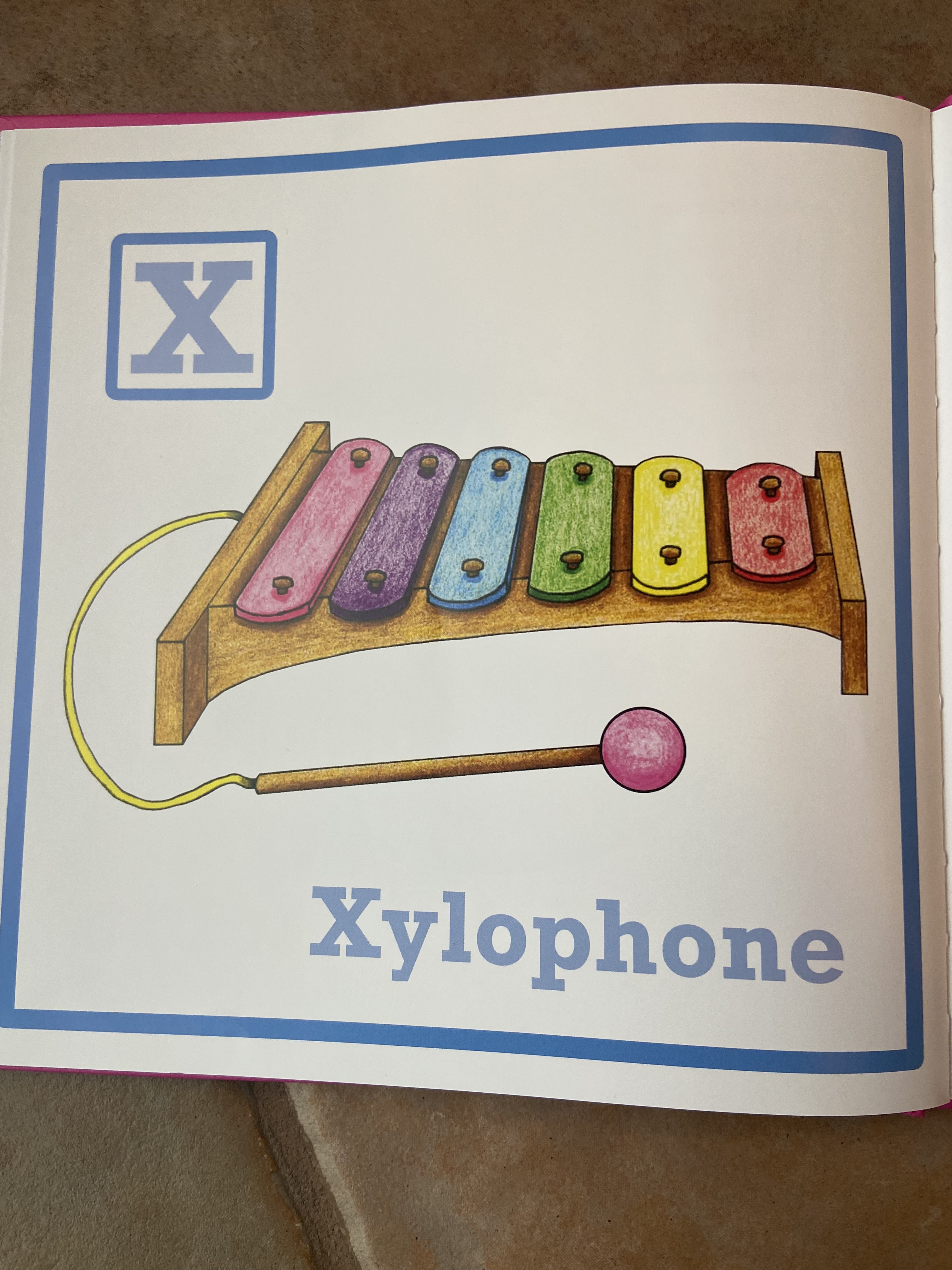
“Why is ‘xylophone’ a poor word choice to use when teaching the letter ‘X’?”
SO many children’s ABC books are out there on the market ready to purchase for well meaning parents, grandparents, relatives, and friends. In fact, when I checked out ‘ABC Books for toddlers ages 1-3’ on Amazon, I found over 7,000 different choices!
When I checked out ‘ABC Books for children ages 3-5’ on Amazon, I found over 6,000 different choices! Not only that, Amazon listed 819 options for ‘ABC Flashcards for ages 2-4’. Obviously, far too many options exist for me to list and keep you interested in reading this article.
When reading one of these books with her grandchild, the grandmother noticed the many wonderful things including:
- lovely, detailed, and colorful illustrations
- usage of only upper case letters, which are typically the first ones younger children learn to recognize in isolation
- a selection of ‘key words’ (words beginning with the primary sound each letter represents) toddlers/parents typically use in conversation
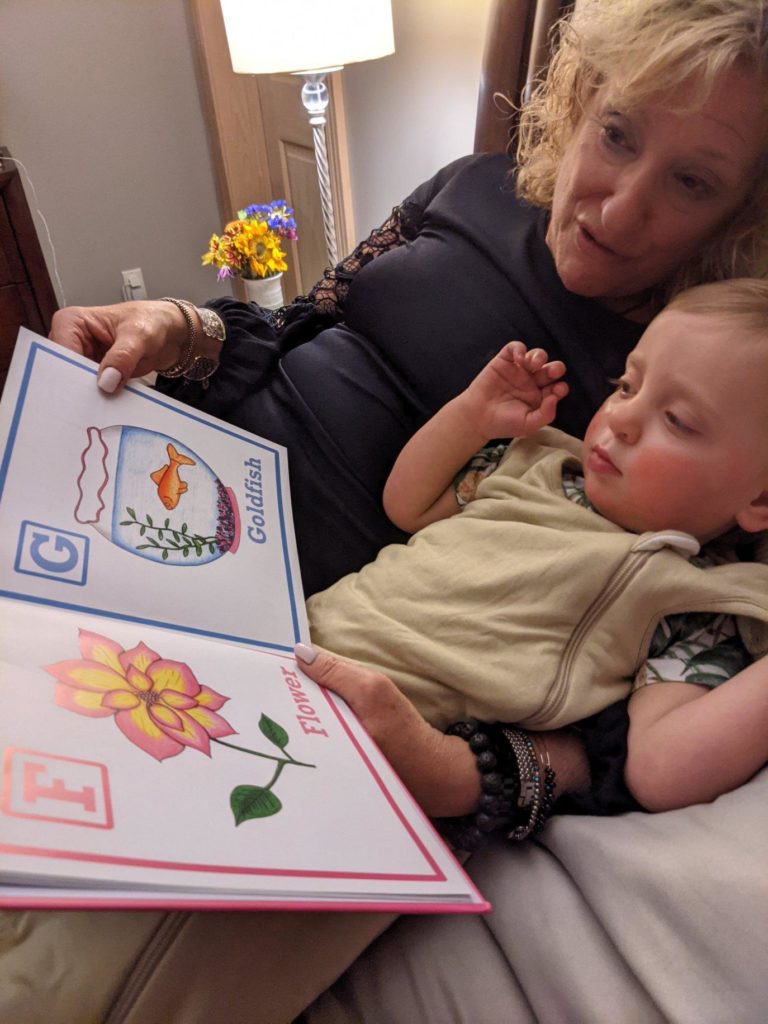
Upon closer inspection, the grandmother also noticed several items she thought perhaps questionable and even confusing to well-meaning caregivers (parent, grandparents, etc.).
Back to the original question: “Why is ‘xylophone’ a poor word choice to use when teaching the letter ‘X’?”
While most children are familiar with a ‘xylophone’ as a toy to be banged upon to make sound and learn about cause and effect (if I bang on the key(s), a sound(s) will be produced), the truth is that the first sound (phoneme) in ‘xylophone’ is the vibrating, sibilant (hissing) /z/ speech sound rather than the far more frequently occurring /ks/ speech sounds as in the word ‘fox’. Additionally, this ‘x’ is so tricky since that /ks/ is really 2 speech sounds (2 phonemes) rather than a single sound (phoneme).
Are grandparents, parents, or caregivers such as other family members, nannies, babysitters, etc. expected to inherently ‘know’ or ‘recall’ this information from the time they were learning to read??? Nope, but at least I have heightened your awareness! When primary children are learning to read in grades K-2, they will most often see the letter <x> as the last letter in a word representing the phonemes /ks/ as in the words: fox, box, tax, T-rex, etc. Primary children will be expected to decode the <x> they see as /ks/ and spell the /ks/ they hear as <x>. A primary child would never be expected to decode or spell the word ‘xylophone’!
I also find this particular author’s choices for several of the vowel letters questionable and/or confusing:
- Why choose ‘ice cream’ as a correspondence for <i>? While many young children are familiar with ‘ice cream’ as a cool, special treat, Approximately 47% of all English syllables in all English words (single or multi-syllable words) contain short vowel sounds rather than the long vowel sounds, r-controlled vowel sounds (i.e. <ar>, <or>, <er>, <ur>), or diphthong vowel sounds (i.e. <ou> as in ‘out’ or <oy> as in ‘boy’). Why use the long ‘i’ (the vowel says its name) in ‘ice cream’? Wouldn’t it be best to select an item with the short ‘i’ (/ĭ/) phoneme such as ‘itch’’? You may recall learning the key word ‘igloo’ yourself as a young child, but..but…dialect plays a role here. In many parts of the world and parts of the US, the word ‘igloo’ is pronounced as /ē-gloo/ with a long ‘e’. It is easy to demonstrate an ‘scratching’ gesture to respond to the feeling of an ‘itch’ as a clue to recall the key word. It is best to teach the most frequently occurring sounds of our language first for sure.
- Why choose ‘owl’ as a correspondence for <o>? Again, while many children are familiar with an ‘owl’, most ‘o’s primary school children will at first encounter will represent the short /ŏ/ phoneme. Wouldn’t it be optimal to select an item with this short ‘o’ (/ŏ/) phoneme such ‘octopus’? Most young children have actually had exposure to an octopus in another book, video, or even at an aquarium.
- Now for ‘e’ as in ‘elephant’. While I am glad to see the short ‘e’ in the key word elephant, the second phoneme in the word is /l/. Confusion on all fronts exists. First, the name of the letter ‘L’ is ‘el’, which is also the first syllable in the word ‘elephant’. Second, it is extremely difficult for anyone, let alone young children, to isolate the initial sound (phoneme) /ӗ/ from the second vocalic /l/ phoneme in the word ‘elephant’. Third, the phonemes /l/ and /r/ are the final ones for children to developmentally master, thereby making this word in and of itself, difficult to pronounce. You may recall learning the key word ‘egg’ yourself as a young child, but..but…again dialect plays a role. In many parts of the US, the word ‘egg’ is pronounced as /āg/ with a long ‘a’ sound…confusion once again. A better choice might be ‘Ed’ or ‘edge’ where it is far easier to isolate the first sound (/ӗ/ phoneme). Granted, many young children may not be familiar with the words ‘Ed’ or ‘edge’, but we can easily teach these vocabulary words!
- Finally, the ‘u’ as in ‘umbrella’ is also difficult to isolate from the second sound (phoneme /m/) since /m/ is a nasal sound. When saying /m/ (/m/ phoneme), the speaker’s lips are closed and air comes through the nose. While most children are familiar with an ‘umbrella’, a better choice would be ‘up’. Experience tells me most children are familiar with ‘up’ as an oral vocabulary word. The author could have shown someone pointing up or a balloon floating up.
When I did a search for keywords used to help children learn short vowel sounds, sadly enough, I continued to see many elephants, igloos, and umbrellas in the mix. Thanks to researchers such as Mark Seidenberg, Maryanne Wolf, and Stanislaus Dehaene, we know more about how the human brain learns to read. We know the brain has a lot to learn in order to be able to ‘crack the code’. Why add more confusion when it is not necessary?
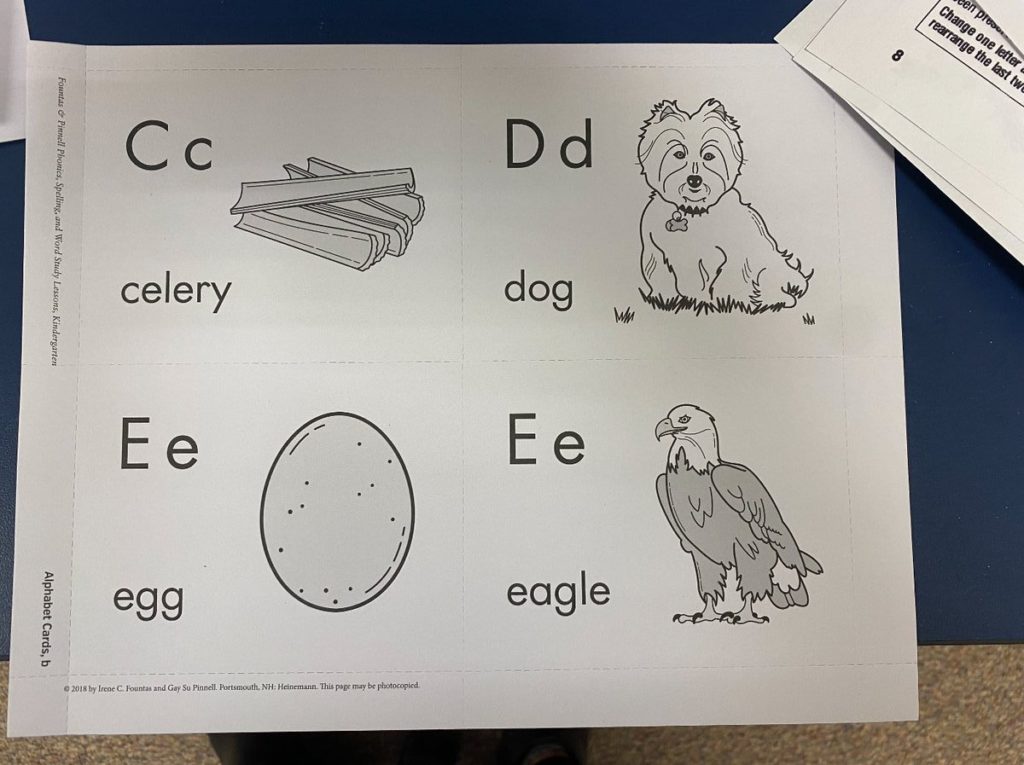
Just yesterday morning, the picture to the right showed up on my Twitter feed:
The simple comment from my colleague, Faith Borkowsky of New York, says it all: “This is CTUPID!” when referencing the use of ‘celery’ as the key word representing the sound of <c> since /k/ is the most frequent sound associated with <c> in common English words–certainly true for the words primary school age children first need to know. If the <ct> spelling ‘looks illegal’ to your eye–you are correct–it never appears at the beginning of a word, but often appears at the ends of words such as ‘act’, ‘object’, or ‘distinct’–and the <c> represents the /k/ sound once again.
Another of my colleagues, Kim Feller-Janus of Wisconsin, added, “Pictures like these are rampant in my state.”
That grandparent was ME–-just in case you couldn’t tell from the picture! I put away the book and played with holiday ink stamps instead! Enjoy this month of “holiday activities” with your young ones!



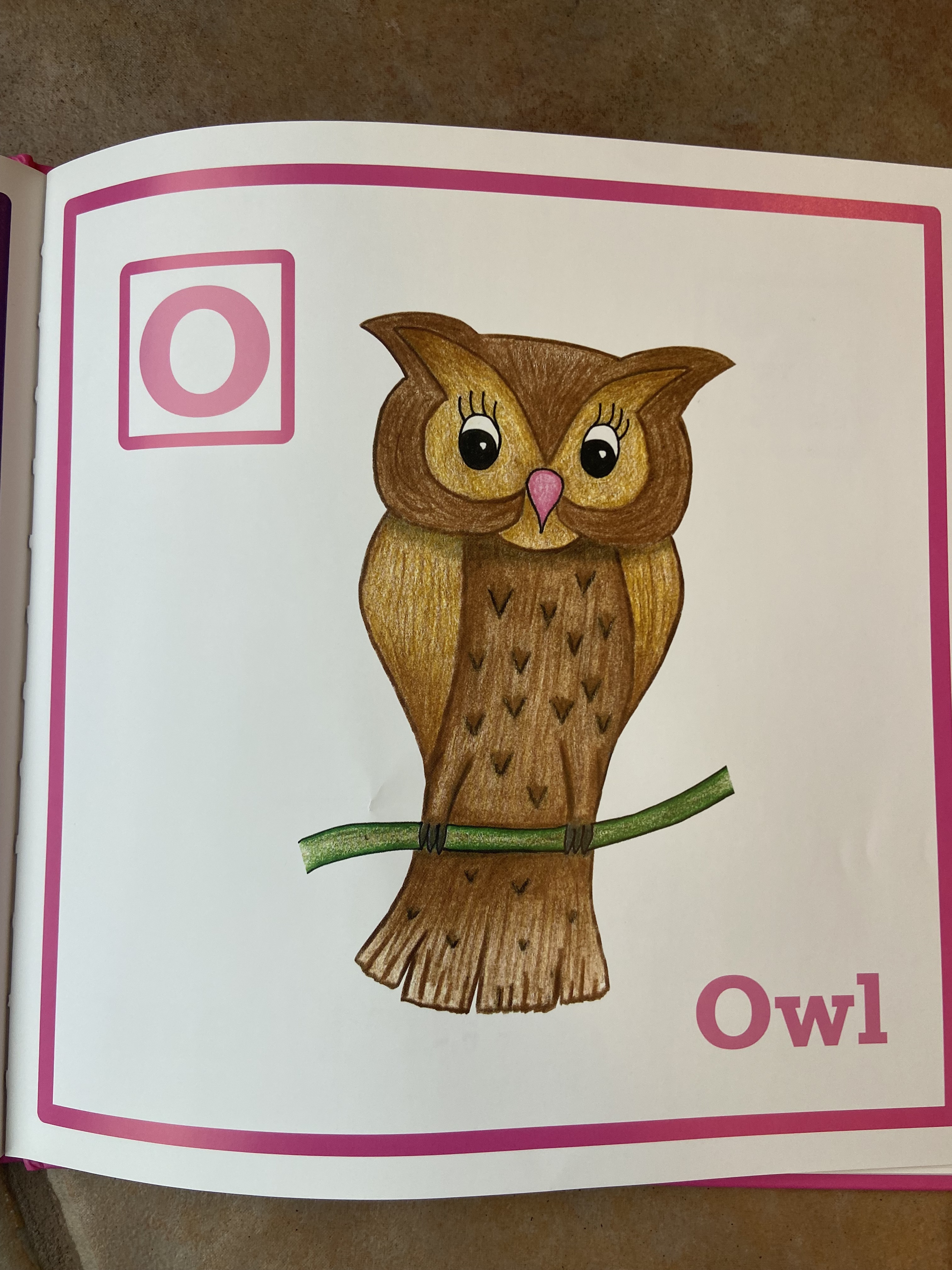
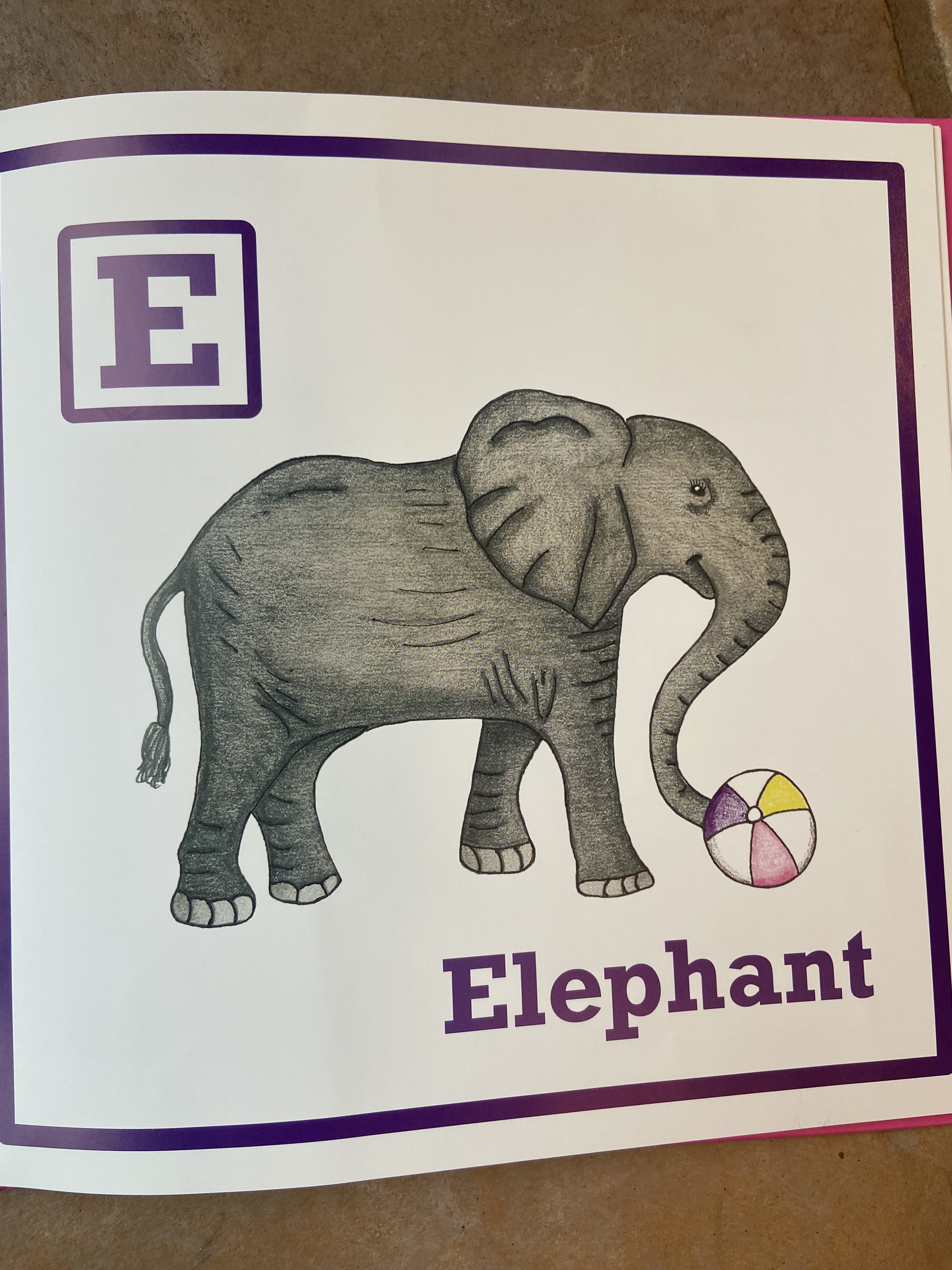
Just a side note on context. The Phonics cards pictured are from page 2 of the complete set. Page 1 being cards for short /a/, long /ā/, /b/, and hard c /k/ for cat. The set also has cards for hard g /g/, soft g /j/, /s/ and voiced s /z/.
Hello Brianne,
Do you mean the page with the ‘celery’? If so, I still think primary school age students need to learn the most commonly used key words for basic consonant and short vowel sounds first, practice, and then move on. Teaching too much at once results in chaos for many students. Thanks for the clarification.
Lori
Lori, I agree with you in most of this. Many ABC book writers simply don’t think of the implications. I will, although, take a small issue with egg. My materials use Edna’s egg. The logic of two words is to use both upper and lower case letters on each key card. Edna works well and I immediately explain that they may use the pronunciations aig and laig at home and that’s just fine but in order to spell the words correctly we need to learn the short e pronunciation. It has never created a problem. Similarly I use Ullrich’s umbrella. Again, both u’s are followed by questionable consonants but the short u is easy to emphasize and in both cases there is a concrete object to picture rather than a less definable concept. Both of these were chosen with a great deal of thought.
Grace, I appreciate your perspective and attention to detail. Love the idea of using the upper case and lower case letters, and I feel quite sure you put a great deal of thought into your word choices. I have consistently, though, experienced lots of confusion with students using the one word samples of ‘egg’ and ‘umbrella’– your additions really do help. And hopefully, ABC book writers will come up to speed in terms of Science of Reading. Thanks for your comments! Want to collaborate on one???
Good post. I certainly appreciate this website. Stick with it!
Thank you so much!! I appreciate your comment.
Lori